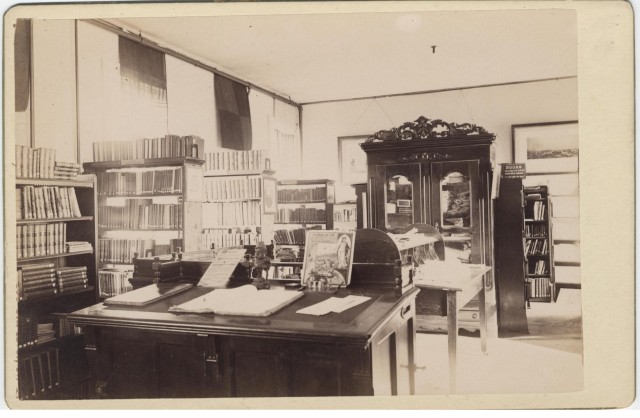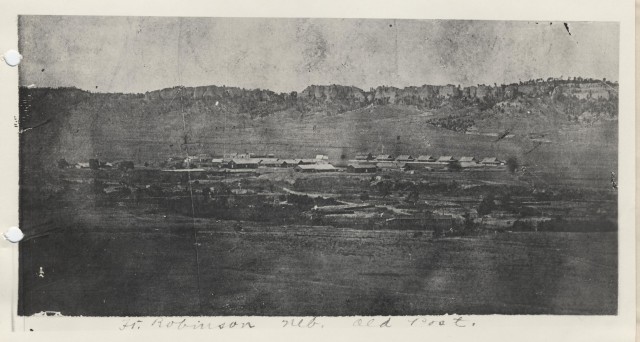Each year, the end of May traditionally marks the beginning of summer reading programs in post libraries for Army dependent children living around the world. Today, soldiers and their families can find the latest bestsellers and access a myriad of online reference resources. However, up until the post-Civil War period, these libraries were not commonly available. The first identified mention of post libraries appeared in the 1821 General Regulations for the Army, which stipulated that monies generated by assessing post sutlers could be used for the Aca,!A"purchase of books, &c. for a library, one section of which, to be adapted to the wants of the enlisted men.Aca,!A? [Article 41, para 14, pages 72-73] There is little evidence, however, that the Army embraced establishing libraries, and in 1857 Secretary of War Jefferson Davis suspended using post funds to support libraries. [Article 23, Para 192, Regulations for the Army of the United States]
In August, 1861, the ArmyAca,!a,,cs Revised Regulations again authorized the use of post funds for the support of post libraries. However by this time, the ArmyAca,!a,,cs main focus was on restoring the Union. With the Civil War concluded, General Orders 22 (April, 1866) again placed a monthly assessment on post sutlers, with the funds generated given to both post and regimental funds. Among the approved expenditures for these funds was Aca,!A"the establishment of a library.Aca,!A?
As regiments relocated to isolated posts west of the Mississippi, post libraries began to appear. As reported by the Fort Laramie post surgeon in 1868: Aca,!A"There is a post library in the adjutantAca,!a,,cs office containing about 300 old, nearly worn out books. A number of papers and periodicals are subscribed for from the Post General Fund and kept in the library room to which the enlisted men have access.Aca,!A?
By 1869, the post library at Fort Wallace, Kansas, contained over 200 volumes plus numerous newspapers and magazines. Usage of the library reached such levels that on March 26, 1869, the Commanding Officer issued the following regulations:
1. But one book at a time will be allowed to be taken out by any one person.
2. Books will not be retained out over one week.
3. The money value of any book injured or lost will be charged to the person by whom it was taken out.
4. Officers or Enlisted men leaving the post for a period of over three days will return any books they may have out before leaving the Post.
5. The library will be open from 3 to 4 oAca,!a,,cclock p.m. Sundays.
By 1883, the Fort Robinson, Nebraska, post library consisted of 700+ books and magazines. As one soldier noted, Aca,!A"We remember yet the looks of pleased anticipation ... in the post library as the librarian cheerfully announced the arrival of Aca,!Eoenew booksAca,!a,,cAca,!A|.Aca,!A? Most of the books pertained to military topics, but the collection also included biographies and novels by such noted authors of the time as Alexander Dumas, Charles Reade, and Wilkie Collins. Sergeant Thomas McKenzie even remembered the library in his will, leaving some $1,100 to be used for the purchase of reading material for the post library.
Throughout the remainder of the century the Army continued to support the establishment of post libraries. As reflected in the May 18, 1878, General Orders 24, the Secretary of War directed that the report submitted by the ArmyAca,!a,,cs Board on the Establishment of Schools at Military Posts and Garrisons be strictly followed. Included in the report was a reiteration that post and regimental funds be used for post libraries. The report also stipulated that those who lose or damage library materials be held accountable and that library books be considered post property and accounted for as such.
To this day post libraries and school libraries continue to serve the needs and interests of Army Soldiers, civilians, and families. And the great library, archives, and museum of the Army Heritage and Education Center at Carlisle Barracks share their vast holdings on the ArmyAca,!a,,cs history with all those audiences, with researchers, and with the American people.
ABOUT THIS STORY: Many of the sources presented in this article are among 400,000 books, 1.7 million photos and 12.5 million manuscripts available for study through the U.S. Army Military History Institute (MHI). The artifacts shown are among nearly 50,000 items of the Army Heritage Museum (AHM) collections. MHI and AHM are part of the: Army Heritage and Education Center (AHEC), 950 Soldiers Drive, Carlisle, PA, 17013-5021.
Related Links:
A Working Bibliography of MHI Sources: ARMY LIBRARY SERVICES








Social Sharing